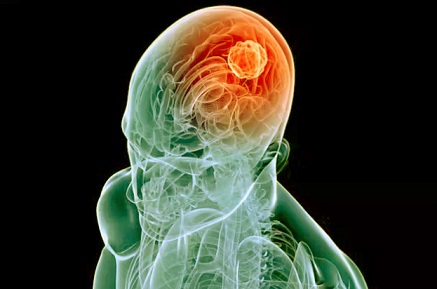Nikhil Prasad Fact checked by:Thailand Medical News Team Nov 22, 2024 1 year, 1 week, 4 days, 14 hours, 41 minutes ago
Medical News: Glioblastoma (GB) is one of the most aggressive brain cancers, claiming lives despite advances in treatment. This tumor infiltrates brain tissue, making complete surgical removal nearly impossible. Even with chemotherapy and radiation, survival rates remain dismal, averaging 12-15 months. To better understand its resistance to treatment, researchers from institutions such as Babu Banarasi Das University-India, Oklahoma State University-USA, Kyung Hee University-South Korea, and others delved into the roles of progenitor cells, microglia, and non-coding RNAs (ncRNAs) in GB progression.
 Progenitor Cells and Microglia Shape Glioblastoma's Deadly Path
The Role of Progenitor Cells
Progenitor Cells and Microglia Shape Glioblastoma's Deadly Path
The Role of Progenitor Cells
Progenitor cells, particularly glioblastoma stem cells (GSCs), are central to the tumor's persistence. These cells, capable of self-renewal, form the backbone of GB's growth and recurrence. This
Medical News report highlights how GSCs emerge from neural progenitor cells due to genetic mutations and epigenetic modifications.
These cells reside in protective environments like hypoxic niches, where they thrive and resist standard therapies. Their adaptability allows them to survive attacks, regroup, and fuel tumor regrowth. This underscores the importance of targeting GSCs in future therapeutic approaches.
Microglia: Friends Turned Foes
Microglia, the brain's immune sentinels, are co-opted by GB to support its malignancy. Instead of fighting the tumor, microglia are reprogrammed to promote its growth. Tumor cells release factors like TGF-β and IL-10, polarizing microglia into an M2 phenotype, which suppresses the immune system and aids in tumor proliferation.
These tumor-associated microglia release cytokines and growth factors that create a feedback loop. They not only support tumor survival but also enhance its invasion into surrounding healthy brain tissue. Blocking this process is a key focus of emerging therapeutic strategies.
Non-Coding RNAs: The Master Regulators
Non-coding RNAs, including microRNAs (miRNAs) and long non-coding RNAs (lncRNAs), act as molecular puppeteers in GB's progression. They regulate genes involved in cell growth, invasion, and resistance to therapy. For instance:
-miR-21 promotes tumor cell proliferation and inhibits apoptosis.
-lncRNA HOTAIR enhances the tumor's invasive capabilities by modifying chromatin structure.
-circHIPK3 fosters cell proliferation by sponging tumor-suppressive miRNAs.
These ncRNAs contribute significantly to GB's resistance mechanisms, making them attractive therapeutic targets.
Challenges in Treatment
The complexity of GB lies in its ability to adapt and resist. GSCs evade treatments through enhanced DNA repair and stemness properties. Microglia create a supportive tumor environment, while ncRNAs modulate gene expressi
on to enhance survival. Overcoming these intertwined resistance mechanisms requires innovative approaches.
Promising Therapies on the Horizon
Researchers are exploring various strategies to combat GB's resilience:
-Targeting Progenitor Cells: Therapies that inhibit pathways like Notch and Wnt aim to disrupt GSC maintenance.
-Reprogramming Microglia: Agents like CSF1R inhibitors prevent microglia from adopting tumor-supportive roles.
-NcRNA-Based Therapies: Techniques like antisense oligonucleotides (ASOs) and miRNA mimics are being developed to modulate ncRNA activity.
-Advanced Drug Delivery: Nanoparticles and exosomes are being designed to cross the blood-brain barrier and deliver treatments precisely to tumor sites.
Conclusion: A Glimmer of Hope
Glioblastoma's aggressive nature stems from the interplay of progenitor cells, microglia, and ncRNAs. Understanding these components reveals potential therapeutic avenues. For instance, personalized treatments based on ncRNA profiles, combined with microglia-targeted therapies, could disrupt the tumor's defenses. Advances in drug delivery systems will be crucial in translating these strategies into clinical success.
Despite its challenges, the fight against GB is advancing. Targeting the progenitor cells-microglia-ncRNA axis offers hope for breaking through resistance mechanisms and improving patient outcomes.
The study findings were published on a preprint server and are currently being peer reviewed.
https://www.preprints.org/manuscript/202411.1464/v1
For the latest on Glioblastoma, keep on logging to Thailand
Medical News.
Read Also:
https://www.thailandmedical.news/news/hdac6-as-a-target-for-glioblastoma-multiforme-therapy
https://www.thailandmedical.news/news/unlocking-the-potential-of-liquid-biopsies-in-glioblastoma-diagnosis-and-treatment
https://www.thailandmedical.news/news/amino-acid-deprivation-as-a-new-hope-in-glioblastoma-treatment
